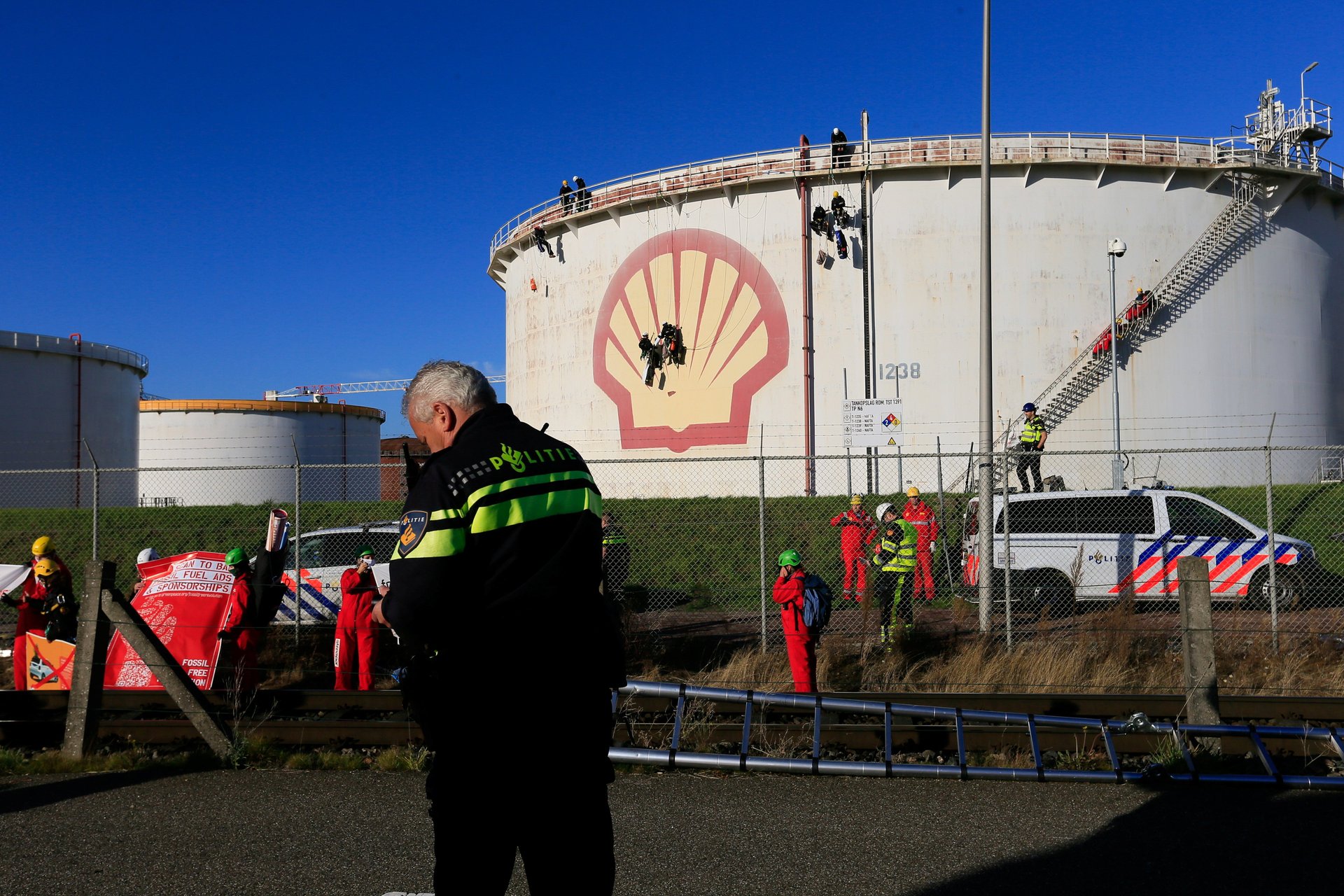Shell is building Europe’s largest green hydrogen plant…to produce fossil fuels
Shell said it’s constructing the largest green hydrogen plant in Europe, which will generate 200 megawatts (MW) of power without emitting any carbon. The plant, to be completed in 2025, will even draw electricity from an offshore wind farm that Shell is also building.


Shell said it’s constructing the largest green hydrogen plant in Europe, which will generate 200 megawatts (MW) of power without emitting any carbon. The plant, to be completed in 2025, will even draw electricity from an offshore wind farm that Shell is also building.
It sounds like a clean-energy dream until you hear that Shell plans to use all of that green hydrogen to produce gasoline, diesel, and jet fuel at its nearby refinery in Rotterdam.
Shell’s new facility, called Holland Hydrogen I, will no doubt bolster the firm’s green credentials and help it inch toward a lofty goal of becoming a “net-zero emissions energy business” by 2050. But the irony of building enormous capacity in renewable and zero-carbon energy, only to use them in producing fossil fuels, highlights the conflicting motives of oil companies like Shell as they attempt to assert their place in the clean energy transition.
Making dirty fuels in a cleaner way
Oil and gas companies are investing billions in hydrogen projects like these because demand for their primary product, fossil fuels, is not abating.
There is currently not enough wind, solar or green hydrogen to power the world, so oil and gas will remain a dominant fuel in the coming years. Until renewable energy is produced in large enough quantities, the industry will need to keep refining fossil fuels. In that sense, decarbonization of Shell’s production process is an incremental gain. And few industries have the capacity, and the money, to develop projects at the scale that hydrogen plants require.
Shell says that the Rotterdam project is the first of many large-scale hydrogen facilities it plans to build, eventually claiming up to 10% of the market for green hydrogen. That will help other industries shift from heavily polluting grey hydrogen to greener forms of the fuel.
Shades of progress in hydrogen production
Gray hydrogen, produced from natural gas, emits 8-12 kg of CO2 for every kilo of hydrogen produced, resulting in two to six times more emissions than burning fossil fuels directly.
Blue hydrogen, which has also been championed by Shell and other oil companies, is just like gray hydrogen, but with some of the emissions captured during production and not released into the atmosphere. Blue hydrogen’s emissions only come out to about 9–12% less than gray hydrogen, according to an August 2021 study by researchers at Cornell and Stanford universities. That’s why a shift to truly green hydrogen would be necessary for a genuine reduction of carbon emissions.
A spokesperson for Shell says that the company is not certain that all the hydrogen produced at Holland Hydrogen I will be green, as the energy mix shifts based on availability. The Rotterdam refinery currently uses grey hydrogen to power its production.
Regardless, the company continues to invest billions into oil and gas extraction, including a new offshore rig it will be towing this month into the Gulf of Mexico to begin pumping oil from eight new wells, an investment that leaves little doubt about the company’s priorities.